
Newton's and Fresnel's Diffraction Experiments
The Continuation of Newton's Diffraction
Experiments
Diffraction of Light at Slit and Hindrance
Interference-Angle Condition, Diffraction and
Imagery
Diffraction One After Another and with
Intermediate Imagery
Diminishing of Frequency of Light after
Diffraction
Inner and Outer Diffraction-Fringes at
Circular Openings
Superposition of Interference and Diffraction
Diffraction Experiments with Inhomogeneous
Illumination
Experiments with Polarized Light at Slit and
Double-Slit
The Background of Diffraction-Figures
Trial for Interpretation of Newton's Diffraction
Experiments
Consequences for Photons out of Newton's
Diffraction Experiments
Consequences for Structure of Electrons out of
that of Photons
The Thermally Conditioned Electromagnetic Field
Diffraction and Light-Emission of Electrons
Energy-Steps of Electrons in Magnetic Eigen-Field
Faraday's Electro-tonic States
Near-Field Optics with Regard to Newton's
Diffraction-Experiments
Consideration of Magnetic Moment of Electron
in Quantum Theories

Diffraction One After Another and with Intermediate Imagery
It is experimentally shown that lst: Diffraction one after another with light of the diffraction-figure of a half-plane shows other results at the following slit than with uninfluenced light. 2nd : If in the image of a double-slit one image of a single slit is masked, so the diffraction-figure shows nevertheless the fringes of double-slit, if the light runs a sufficient long way before the intermediate optic (order decimetre). The photon gets information of the slit that it did not pass itself.
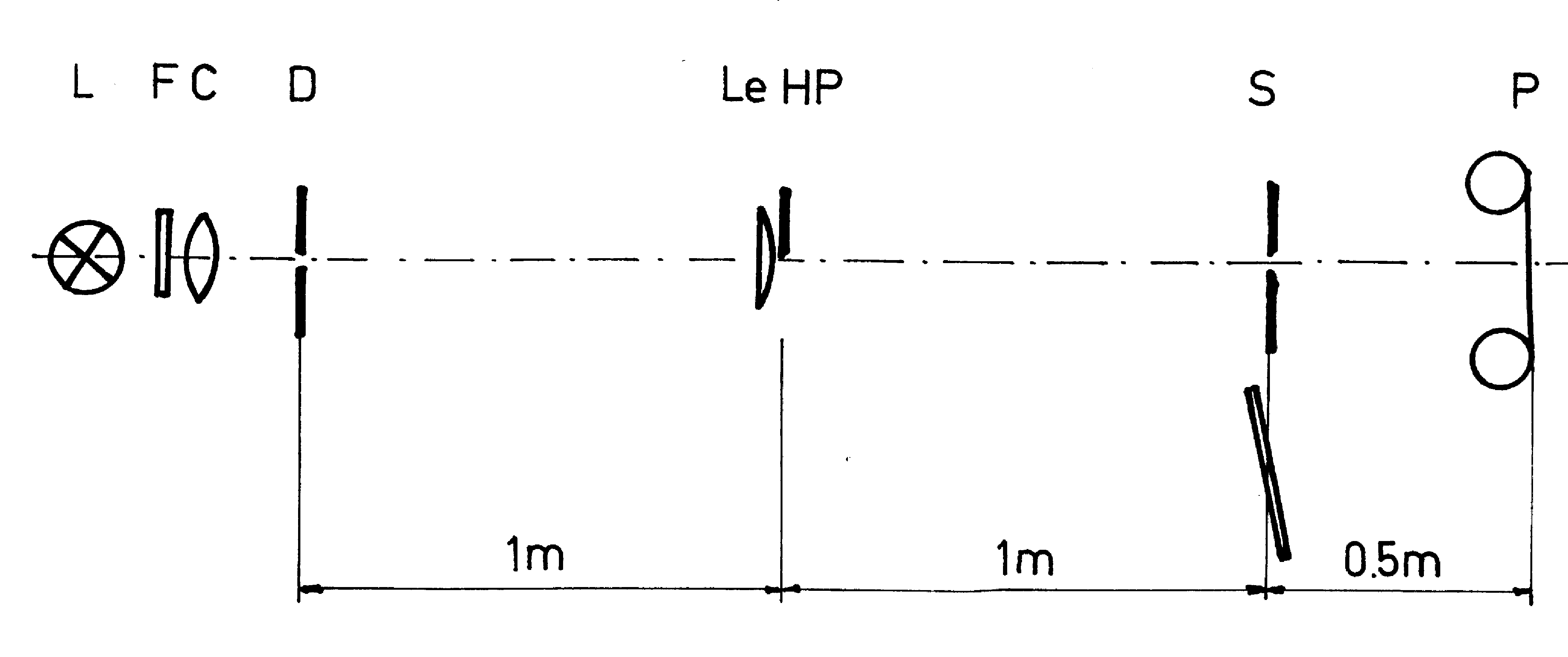
Figure 1. Experimental arrangement for diffraction following one after another. L - light-source, a super-pressure mercury-lamp HBO 100; F -green-filter; C - condenser; D - pinhole-diaphragm, a spinning nozzle 50 µm; Le. - lens f' = 1 m; HP - half-plane, a razor-blade; S - slit 0.3 mm, 10° towards HP oblique; P - photo-film in a miniature-camera without optic.
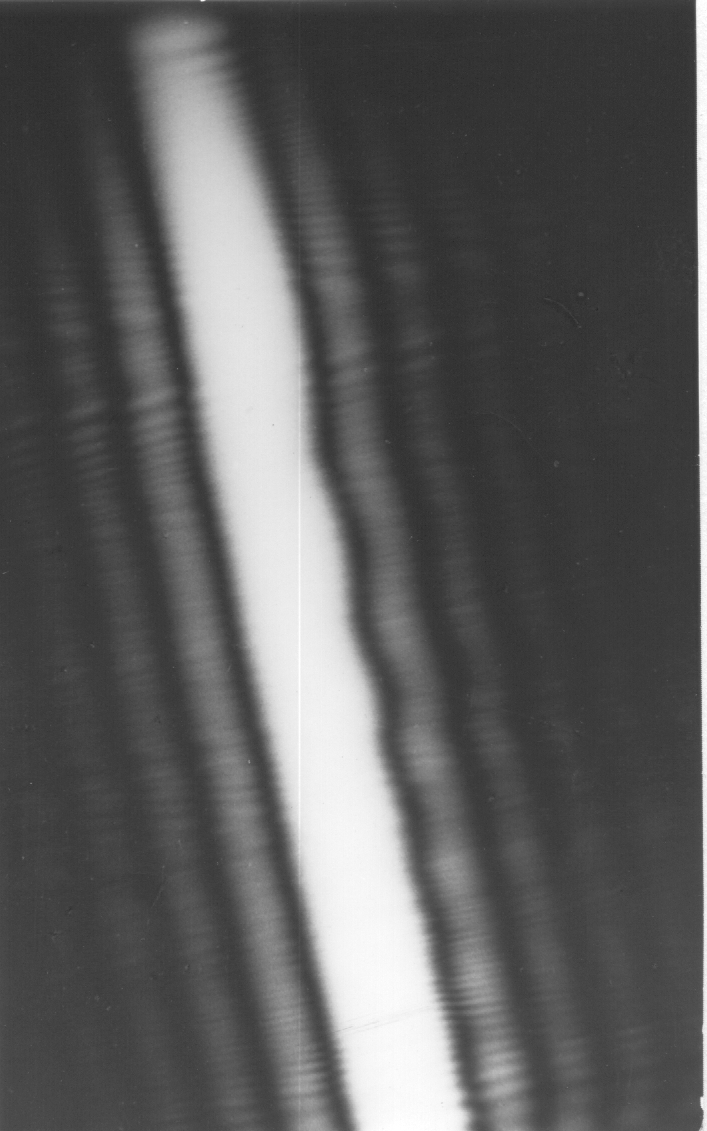
Figure 2. Experimental results with the arrangement of figure 1. The direction of light- and shadow-side is fixed by the half-plane. Enlargement of a negative at which the exposure-time was fitted to the higher orders.
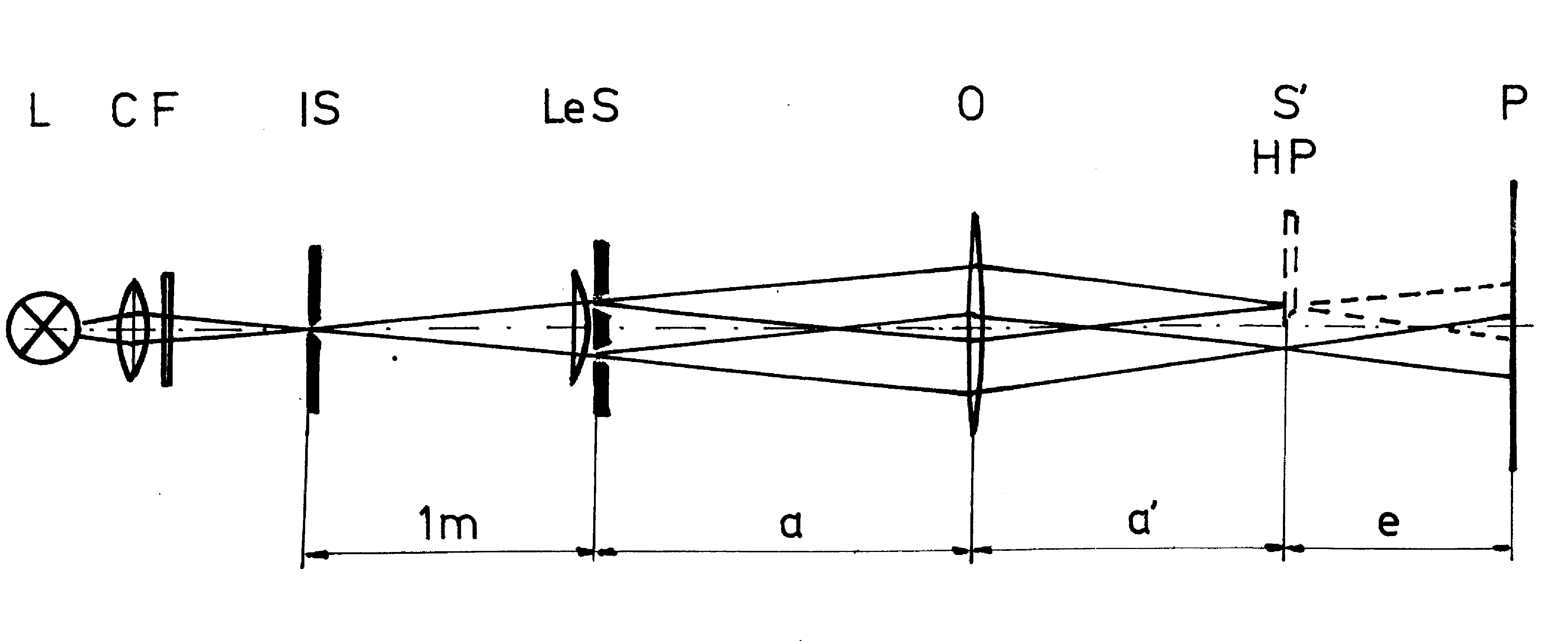
Figure 3. Experimental arrangement for double-slit with intermediate imagery with indicated optical path. L - light-source, a super-pressure mercury-lamp HBO 100; C - condenser; F - green-filter; IS -illumination slit; Le - lens f' 1 m; S - double-slit; O - telescope-objective f'= 60 cm, diameter 10 cm, a best-form lens; S' - the image of the double-slit, HP - half-plane, a razor-blade on a carriage with a micrometer-screw; P - photographic film.

Figure 4. Experimental results of masking one image of the double-slit in the arrangement figure 3. With -a = a' = 1.2 m, e = 1 m, IS - 0.15 mm, S - single slit-width 0.25 mm and 1.5 mm intermediate piece.
a: diffraction-figure of double-slit,
b: one image of single slit masked
c: half-plane HP masked till the middle of both slit images.
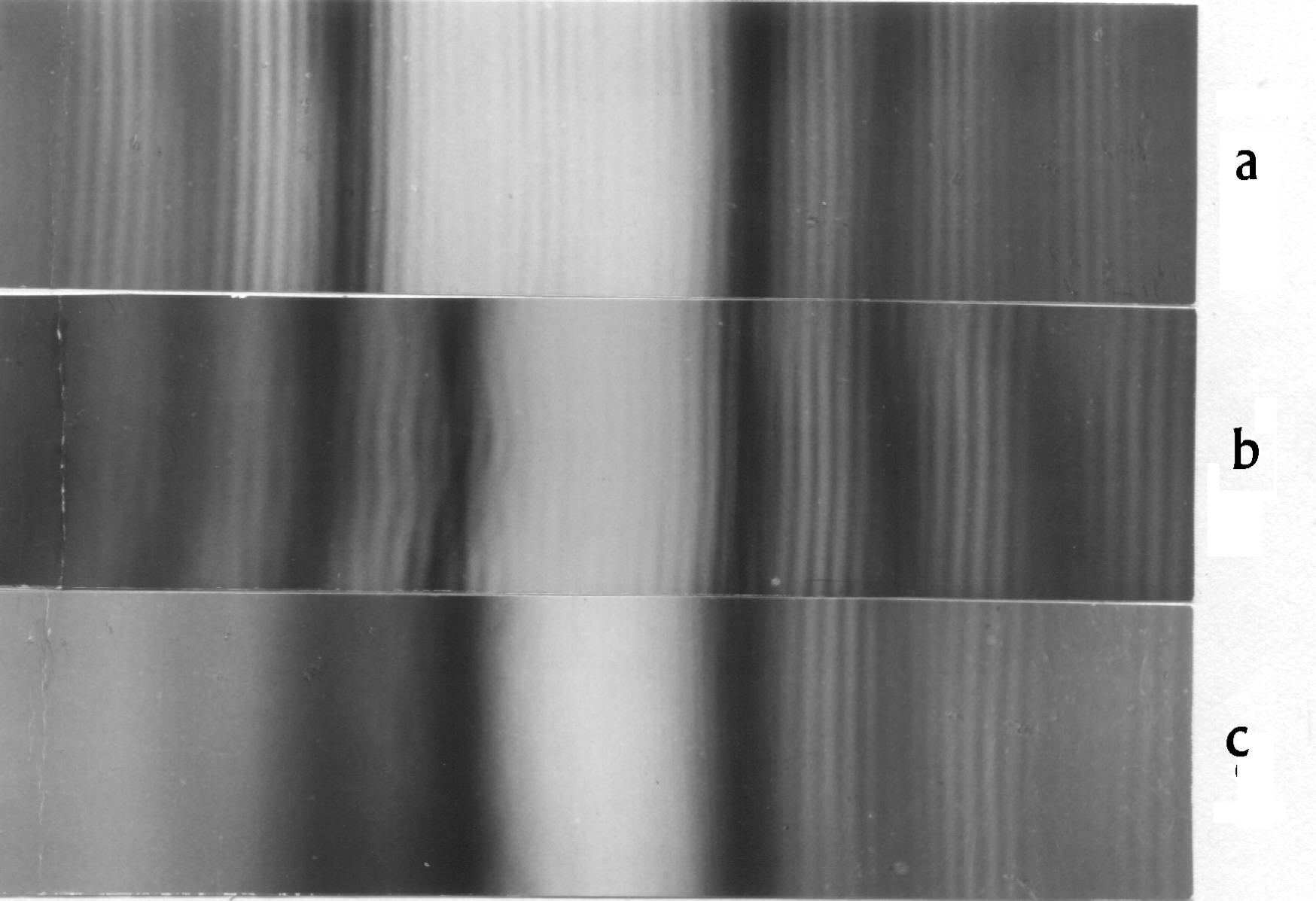
Figure 5. Experimental results of masking one image of the double-slit with a = -8 m, a' = 0.63 m, e = 0.3 m, IS = 0.04 mm, S - double-slit, single slit width 1 mm and 5 mm intermediate piece.
a: diffraction-figure of double-slit,
b: one image of single slit masked,
c: half-plane HP masked till the middle of both slit images.
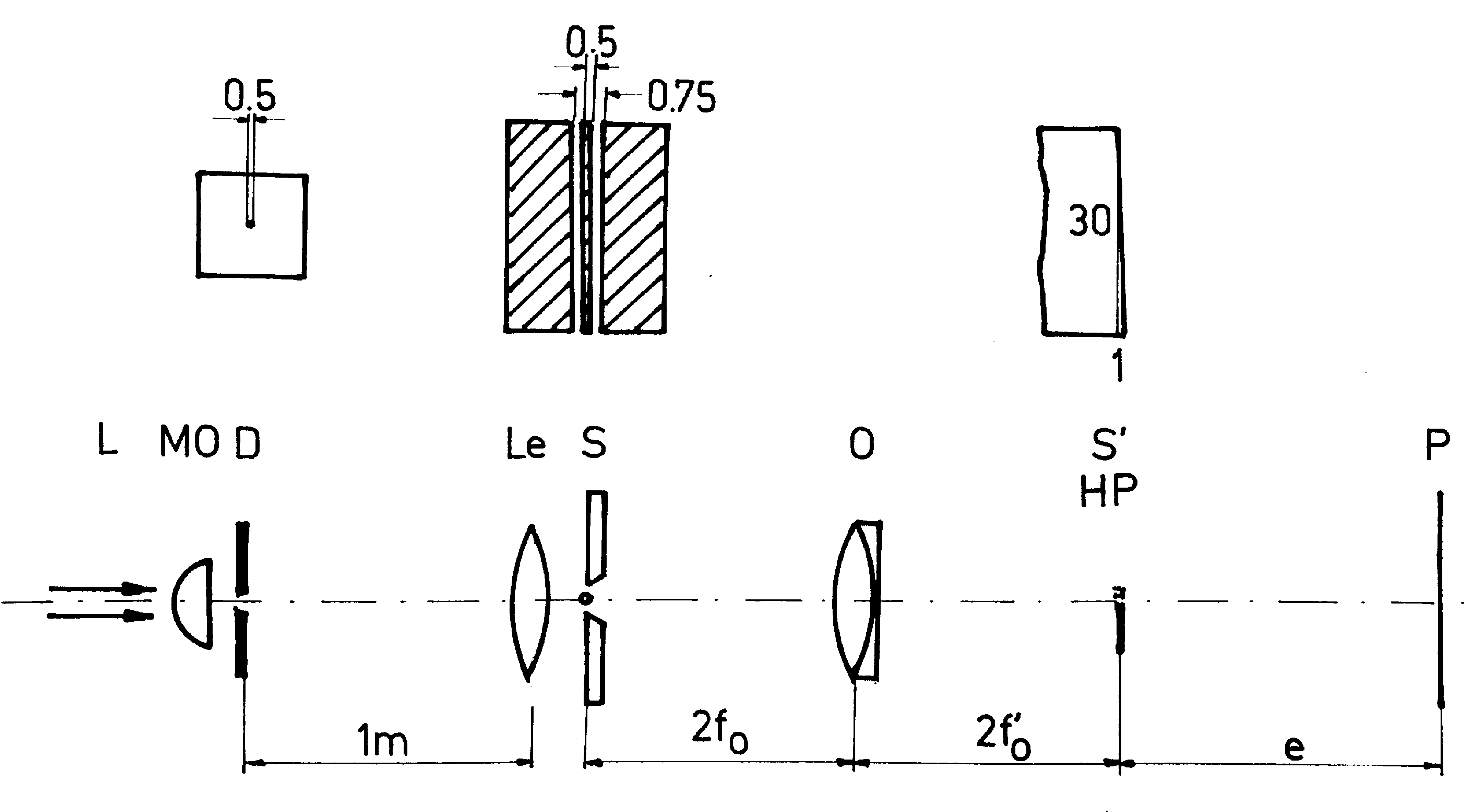
Figure 6. Experimental arrangement for the diffraction experiments at double-slit with intermediate imagery by oblique masked slit image. L - helium-neon laser HNA 188; MO - microscope objective; D - pinhole-diaphragm diameter 50 µm; Le - lens f' = 1 m ; S - double-slit, a precision-slit 0.75 mm open with a axis-steel Ø 0.5 mm as intermediate piece; O - photographic lens with different focal-length; S' - image of the double-slit S; HP - in the plane S' placed half-plane 1 : 30 oblique to S'; P -photo-plate.

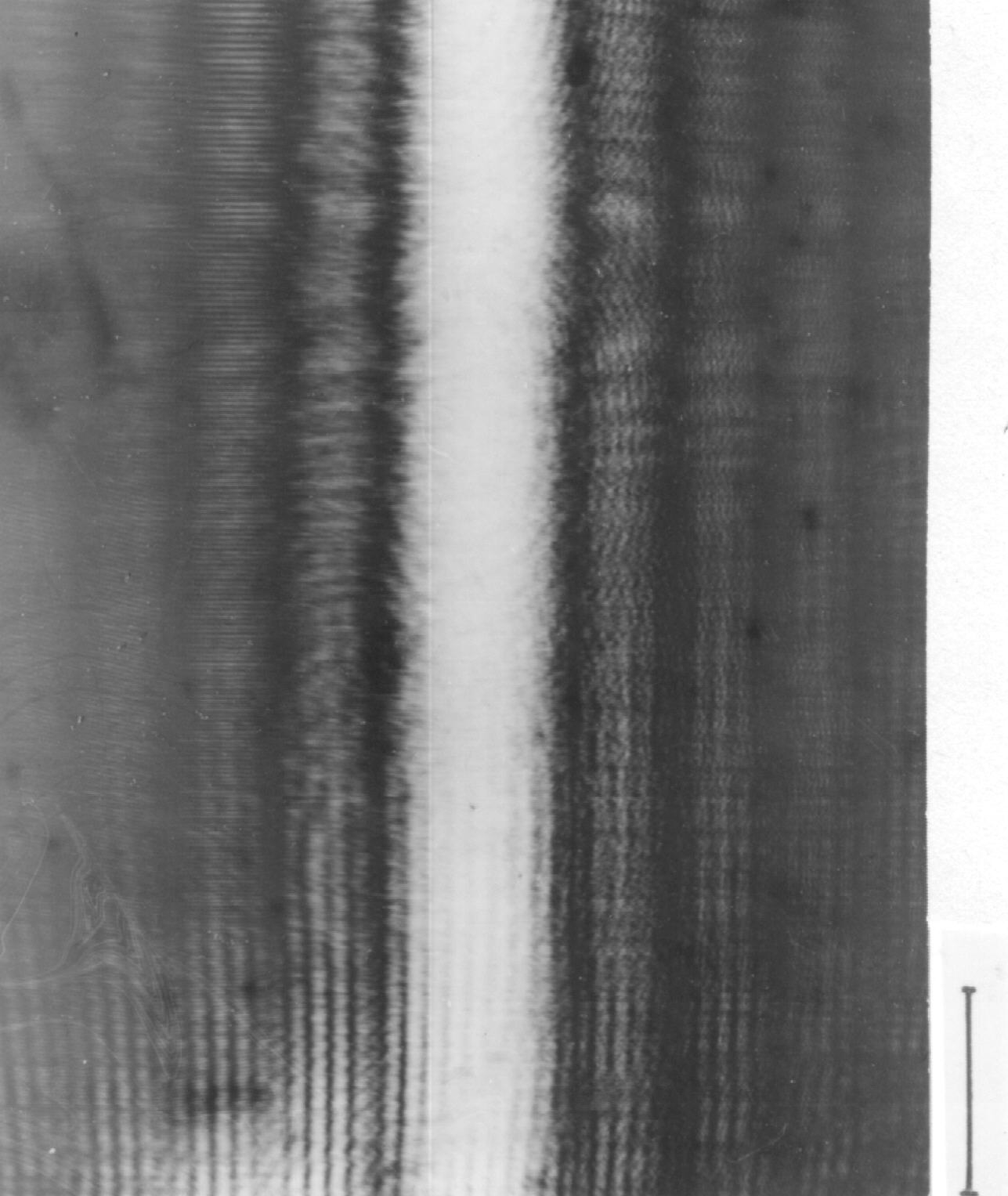
Figure 7a: O - tessar 1 : 2 8, f' = 50 mm, Figure 7b: O - tessar 1 : 4.5, f' = 135 mm,
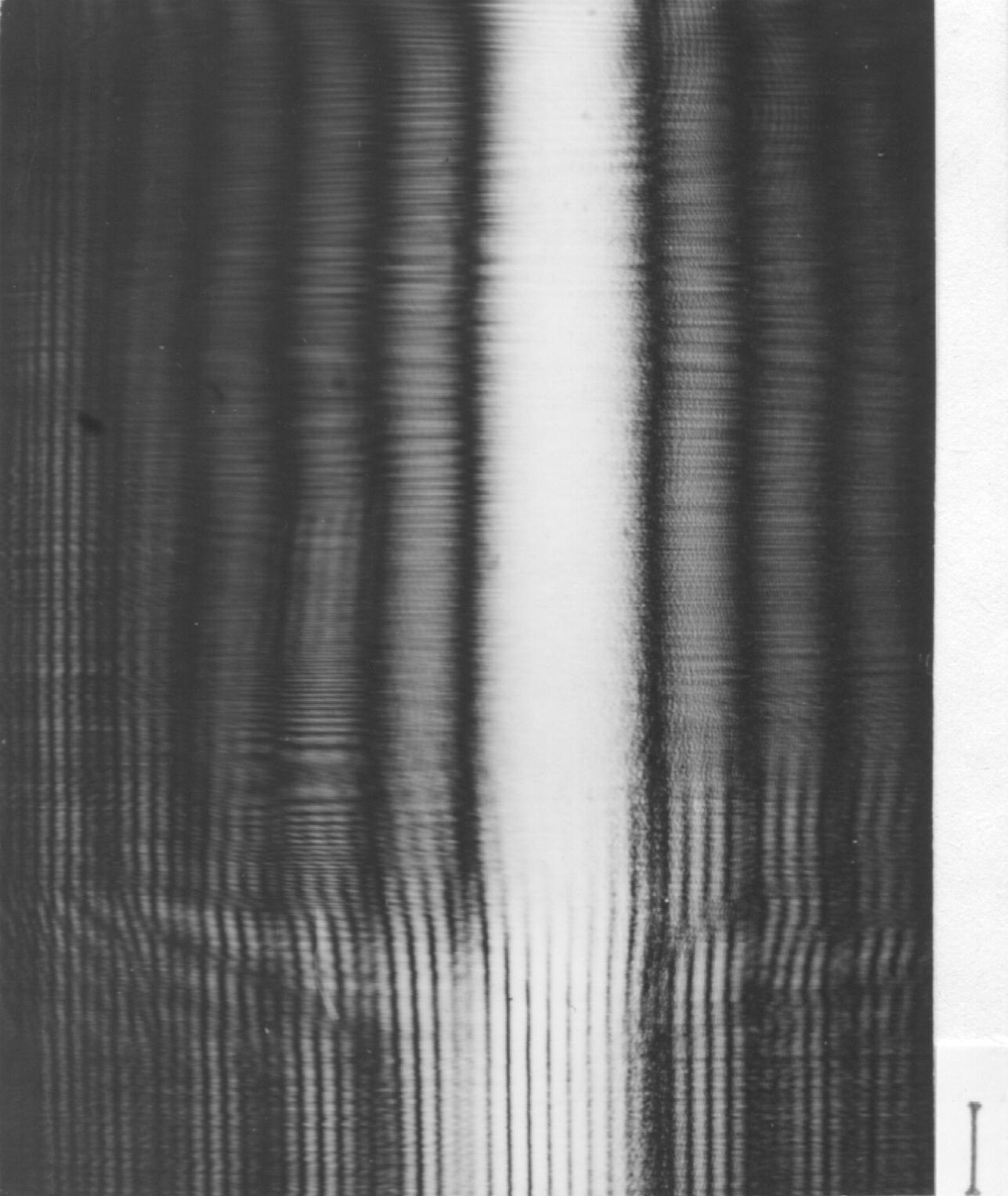
Figure 7c: O - achromat 1 : 8, f' = 320 mm.
Figure 7. Diffraction-figures of a double-slit with oblique masked slit image S' according to figure 6 with e = const. = 640 mm, besides every photo is drawn up the relative vertical ratio scale e/fO..


Figure 8a: O - tessar 1: 4.5, f' = 135 mm, Figure 8 b: O - achromat 1 : 7, f' = 400 mm.
Figure 8. Diffraction-figures of a double-slit with oblique masked slit image S' according to figure 6 with e/f' = constant.
Discussion of the experiments with the double-slit
For the wave-hypothesis the diffraction at double-slit was no problem, this was explainable with Young's principle, indeed, at the double-slit this principle was developed above all. When the quantum-nature of light was discovered many discussions were carried on, for a photon can only pass one slit and so at that time they were standing helplessly opposite this interference-figure. Experiments with coincidence-detectors instead observation or photos in double-slit or interference-apparatus result by change of path-length in one path a periodical change of coincidences; consequently no more what is known 150 years ago: The interferences are shifting.
The experiments with masked image of a double-slit show that a photon can receive the information of a slit which it did not pass itself, if the photon runs a sufficient long way from diffraction to the intermediate optic. Here is to think of ideas of Broglie [6] about the photon and its lead- or guidance-wave; nevertheless, wave is to replace by field, what Born [7] already corrected, because wave is too special. The field of photon passes then also the slit which the photon does not pass and return to its photon whereby the photon gets information about the slit which it does not pass itself.
References
[1] A. Fresnel, Oeuvres Complétes I. Paris 1866; Abhandlungen über die Beugung des Lichtes. Ostwalds Klassiker Nr. 215, Engelmann, Leipzig 1926.
[2] I. Newton, Opticks, or a Treatise of the Reflexions, Refractions Inflexions and Colours of Light. London 1704; Opera quae exstant omnis, Tom IV, London 1782; Optics, reprint, Bruxelles 1966; Optik II + III, Übers. W. Abendroth, Ostwald's Klassiker Nr. 97, Engelmannn, Leipzig 1898; Neuauflage Bd. 96/97, Vieweg, Braunschweig 1983; Optique, Trad. J. P. Macat 1787; Bourgois, Paris 1989.
[3] H. Nieke, Newtons Beugungsexperimente und ihre Weiter- führung. Halle 1997, Comp. Print 1, Arbeit 1 (vorhanden in vielen Deutschen Universitätsbibliotheken) Newton's Diffraction Experiments and their Continuation. Halle 1997, comp. print 3, paper 1 (available in some university libraries)
[4] As [3], paper 2.
[5] As [3], paper 3.
[6] L. de Broglie, La physique quantique restera-t-elle indéterministe? Gauthier-Villars Paris 1953; Phys. Bl. 19 (1953) 488, 541.
[7] M. Born, Physik im Wandel meiner Zeit. Vieweg, Braunschweig u. Akademie-Verlag, Berlin 1958, S. 35. Physics in my Generation. Pergamon, London 1959.
© 2006 by tediamedia • info@gebeugtes-licht.de